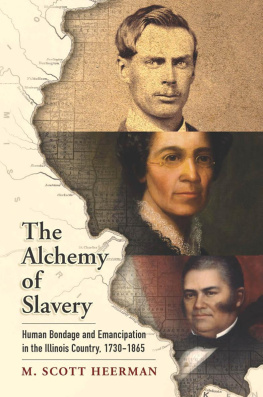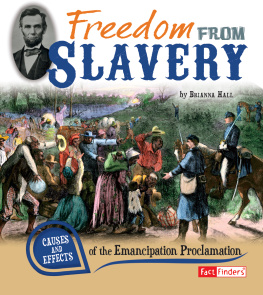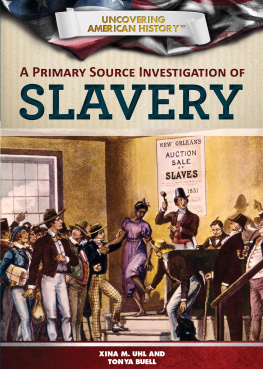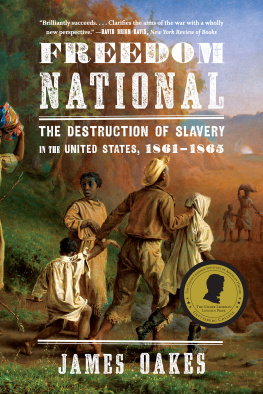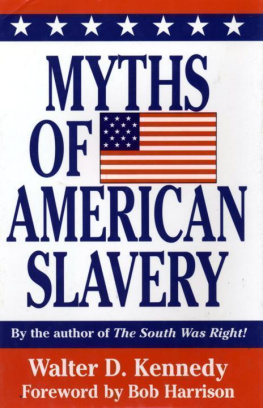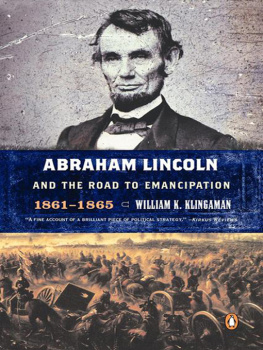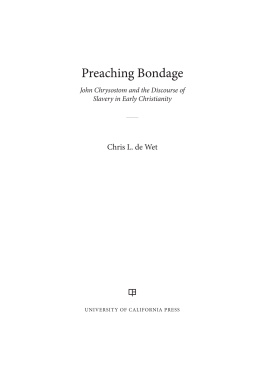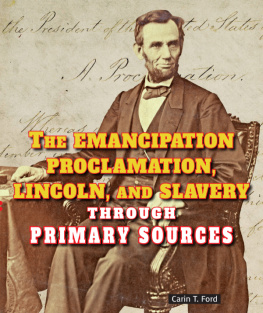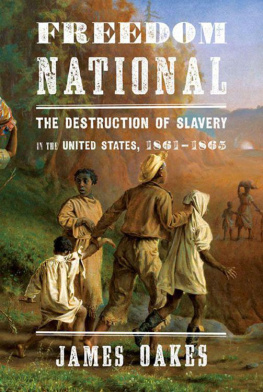The Alchemy of Slavery
AMERICA IN THE NINETEENTH CENTURY
Series editors:
Brian DeLay, Steven Hahn, Amy Dru Stanley
America in the Nineteenth Century proposes a rigorous rethinking of this most formative period in U.S. history. Books in the series will be wide-ranging and eclectic, with an interest in politics at all levels, culture and capitalism, race and slavery, law, gender, and the environment, and regional and transnational history. The series aims to expand the scope of nineteenth-century historiography by bringing classic questions into dialogue with innovative perspectives, approaches, and methodologies.
Copyright 2018 University of Pennsylvania Press
All rights reserved.
Except for brief quotations used for purposes of review or scholarly citation, none of this book may be reproduced in any form by any means without written permission from the publisher.
Published by
University of Pennsylvania Press
Philadelphia, Pennsylvania 19104-4112
www.upenn.edu/pennpress
Printed in the United States of America on acid-free paper
1 3 5 7 9 10 8 6 4 2
Library of Congress Cataloging-in-Publication Data
Names: Heerman, M. Scott, author.
Title: The alchemy of slavery : human bondage and emancipation in the Illinois Country, 17301865 / M. Scott Heerman.
Other titles: America in the nineteenth century.
Description: 1st edition. | Philadelphia : University of Pennsylvania Press, [2018] | Series: America in the nineteenth century | Includes bibliographical references and index.
Identifiers: LCCN 2018007657 | ISBN 9780812250466 (hardcover : alk. paper) Subjects: LCSH: SlaveryIllinoisHistory18th century. | SlaveryIllinoisHistory19th century.
Classification: LCC E445.I2 H44 2018 | DDC 306.3/620977309033dc23
LC record available at https://lccn.loc.gov/2018007657
It could be a difficult crossing. The Mississippi River spanned more than a mile between the French village at Kaskaskia, in present-day Illinois, and St. Genevieve, now part of Missouri. For much of the 1750s, the Reverend Father Alexandre Xavier de Guyenne, cur of Kaskaskia, frequently traveled between Catholic parishes on opposite banks of the Mississippi. Four parishes operated on the east bank of the river, and a new one had just opened on the west bank. But the parish in St. Genevieve had no priest, and so the Jesuit superior of the Kaskaskia mission tended to its members, instructing residents in the pillars of the faith, as well as visiting the sick and in relieving the poor. Despite the challenges, a sense of mission brought Father Guyenne back and forth across the Mississippi. But what motivated the unnamed slave to keep returning time and again between the banks of the river and not trying to head off to freedom?
Answering this question would require teasing out some of the details of the enslaved rowers life, which proves to be a difficult task. Pinning down the identity of this single slave, as well as surmising his or her motivations, is so challenging because a range of enslaved experiences existed in Illinois. Slavery was at once a form of coerced labor and a method of indigenous politics, and these different ways of organizing enslavement operated simultaneously. During the 1750s, the Jesuit fathers in Illinois owned over thirty slaves, some of them of African descent, some of them indigenous slaves, and it is impossible to know which or how many of them ferried Father Guyenne back and forth across the Mississippi. When Jesuits or other slaveholders spoke of slaves, they could have meant people of African descent brought to the region to labor on the fields, people of Indian descent adopted into French society through a politics of captive exchange, or an enslaved person born in Illinois who shared both Indian and African ancestry. Enslaved people coerced to serve the Jesuit fathers could have had an array of different racial origins and be held in slightly different statuses, and that fact uncovers the reality that slavery never operated in any one framework or served any one function.
Taking stock of the slaves that the Jesuits owned and speculating about the identity of this enslaved rower shed light on the different processes of enslavement that trapped people in bondage in this colony. For instance, the rower could have been Louis, an enslaved man of African descent who appears to have observed at least some elements of the Catholic faith; he married in the church and together with his enslaved wife Therese had his daughter baptized. If Louis had been the unnamed navigator, perhaps a duty to the faith, the joy of seeing his wife and daughter, and a community he called his own could have kept him returning. However, enslaved Indian women also lived in the Jesuit parish in Kaskaskia and could have been guides to the missionaries in the Mississippi Valley. These enslaved people had not been brought to the region to clear and work the land. Instead, indigenous bondage operated as a form of Indian diplomacy and undergirded alliance systems in the region. Perhaps, then, if Guyennes slave was a woman of indigenous descent, she returned time and again because her adoption into a new society, coerced though it was, gave her some tie of kinship that she would not want to sever.
Whoever it was that brought Guyenne to and fro, it is clear that over time, slaves of diverse origins came to live side by side in the tiny Illinois outpost. Most of the Jesuit slaves probably worked in the colonys lucrative agricultural economy that could produce all things needed to support life, and even to make it agreeable.another as masters turned many slaveries into one. By the turn of the nineteenth century, this community of enslaved people would become the French Negroes, an invented legal category for a diverse group of people enslaved in Illinois. But they would not be the only types of slaves in the Prairie State.
Sometime around 1818, William Wilson moved from the Missouri Territory into the Illinois Country, and he brought with him two enslaved young negro women, Judith and Lindah. By terms of the 1787 Northwest Territory Ordinance, the U.S. government had made slavery and involuntary servitude illegal in Illinois.
The adaptations to slaving practices were on full display when masters like Wilson turned slaves into lifelong servants. While politicians met to create a new state charter that purportedly banned slavery, masters signed slaves into lifelong indentureships to keep human bondage alive by other means. This legal dodge operated under the fiction that the two enslaved women consented to their servitude and signed onto new terms, making their unfreedom nominally voluntary. Even though the two women were enslaved at the time they signed these contracts, the law treated them as voluntary servants. Wilson could then put them to work either in the states agrarian districts or in its salt mines, where hundreds of servants and slaves did the brutal work of harvesting, processing, refining, and shipping salt. In time, the Illinois Supreme Court would uphold indentures like Judith

